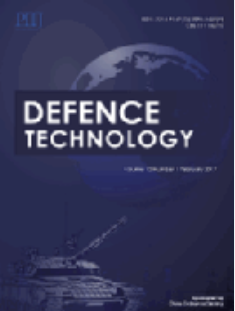Kinetics and mechanism of the low-energy β-α phase transition of the second kind in 2,4-dinitroanisole
IF 5
Q1 ENGINEERING, MULTIDISCIPLINARY
引用次数: 0
Abstract
In this work, comprehensive studies of 2,4-dinitroanisole (2,4DNAN) were carried out using powder thermorentgenography of the internal standard. The time of the complete polymorphic transition in the solid phase β→α in 2,4DNAN under various combinations of conditions has been determined. It has been established that, regardless of the season of manufacture of the substance, when it is stored for 8–9 months, with a change in ambient temperature from minus 30 °C to plus 30 °C, a complete polymorphic transition β→α occurs. When stored in conditions below minus 5 °C, polymorphic transition does not occur. When stored in conditions above plus 30 °C in a closed container, polymorphic transition occurs within 3 weeks. The polymorphic transition is accompanied by a decrease in density by 1.3%–1.5% and an increase in melting temperature by 10–12 °C, depending on the degree of purity of the starting substance. The activation energy of the molecular rearrangement was 68–70 kJ/mol (16.5 ± 3 kcal/mol). The mechanism of polymorphic transition has been evaluated, which is presumably based on internal homodiffusion and energy transfer to the surface of the mass of powder particles and the product. The average activation energy of the polymorphic transition process was 110 ± 6.2 kJ/mol (26.2 kcal/mol). In an open container, reactions proceed by a homogeneous mechanism, and in a closed container by a heterogeneous mechanism involving the gas phase.
2,4-二硝基苯甲醚中低能β-α第二类相变的动力学和机理
本研究利用内标粉末热成像仪对 2,4-二硝基苯甲醚(2,4DNAN)进行了全面研究。测定了在不同条件组合下,2,4-二硝基苯甲醚固相β→α完全多态转变的时间。结果表明,无论该物质的生产季节如何,在环境温度从零下 30 °C升至零上 30 °C、贮存 8-9 个月后,都会发生完全的多态转变 β→α。在低于零下 5 °C 的条件下储存时,不会发生多态转变。如果在高于正 30 °C 的条件下储存在密闭容器中,多态转变会在 3 周内发生。多态转变伴随着密度下降 1.3%-1.5%,熔化温度升高 10-12 °C,具体取决于起始物质的纯度。分子重排的活化能为 68-70 kJ/mol(16.5 ± 3 kcal/mol)。对多晶型转变的机理进行了评估,推测其机理是基于粉末颗粒和产物表面的内部同扩散和能量转移。多态转变过程的平均活化能为 110 ± 6.2 kJ/mol(26.2 kcal/mol)。在开放容器中,反应以均相机制进行,而在封闭容器中,反应以涉及气相的异相机制进行。
本文章由计算机程序翻译,如有差异,请以英文原文为准。
求助全文
约1分钟内获得全文
求助全文
来源期刊

Defence Technology(防务技术)
Mechanical Engineering, Control and Systems Engineering, Industrial and Manufacturing Engineering
CiteScore
8.70
自引率
0.00%
发文量
728
审稿时长
25 days
期刊介绍:
Defence Technology, a peer reviewed journal, is published monthly and aims to become the best international academic exchange platform for the research related to defence technology. It publishes original research papers having direct bearing on defence, with a balanced coverage on analytical, experimental, numerical simulation and applied investigations. It covers various disciplines of science, technology and engineering.
 求助内容:
求助内容: 应助结果提醒方式:
应助结果提醒方式:


